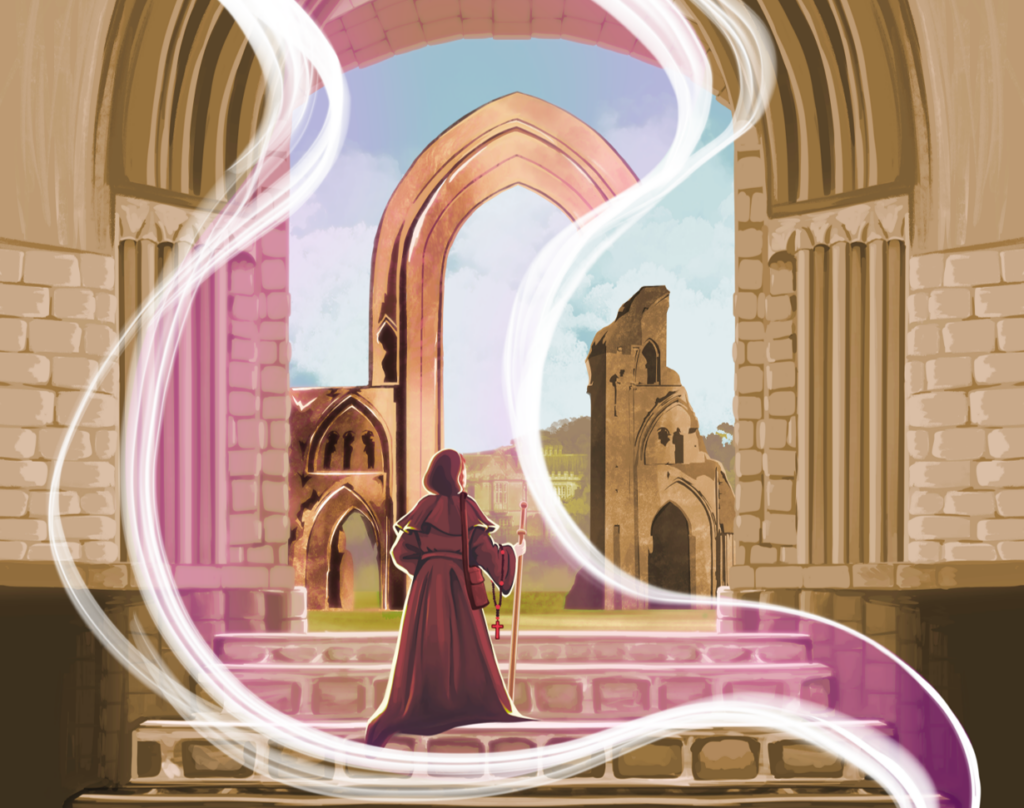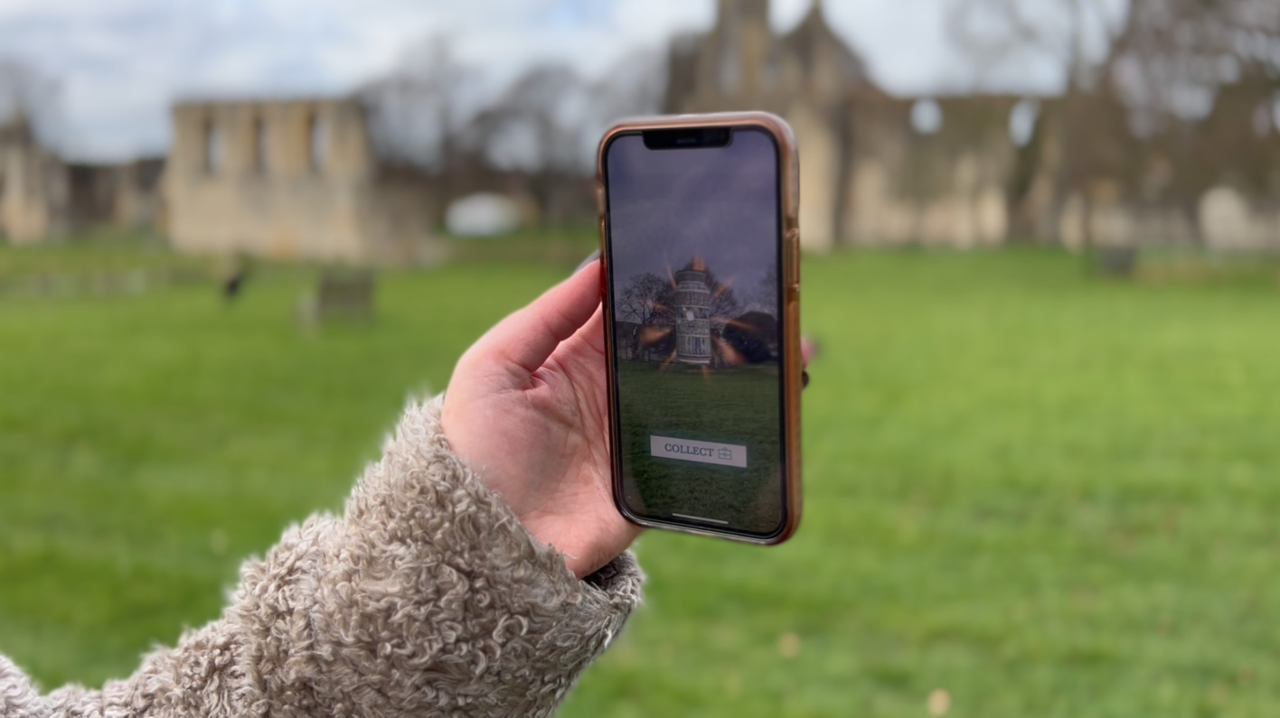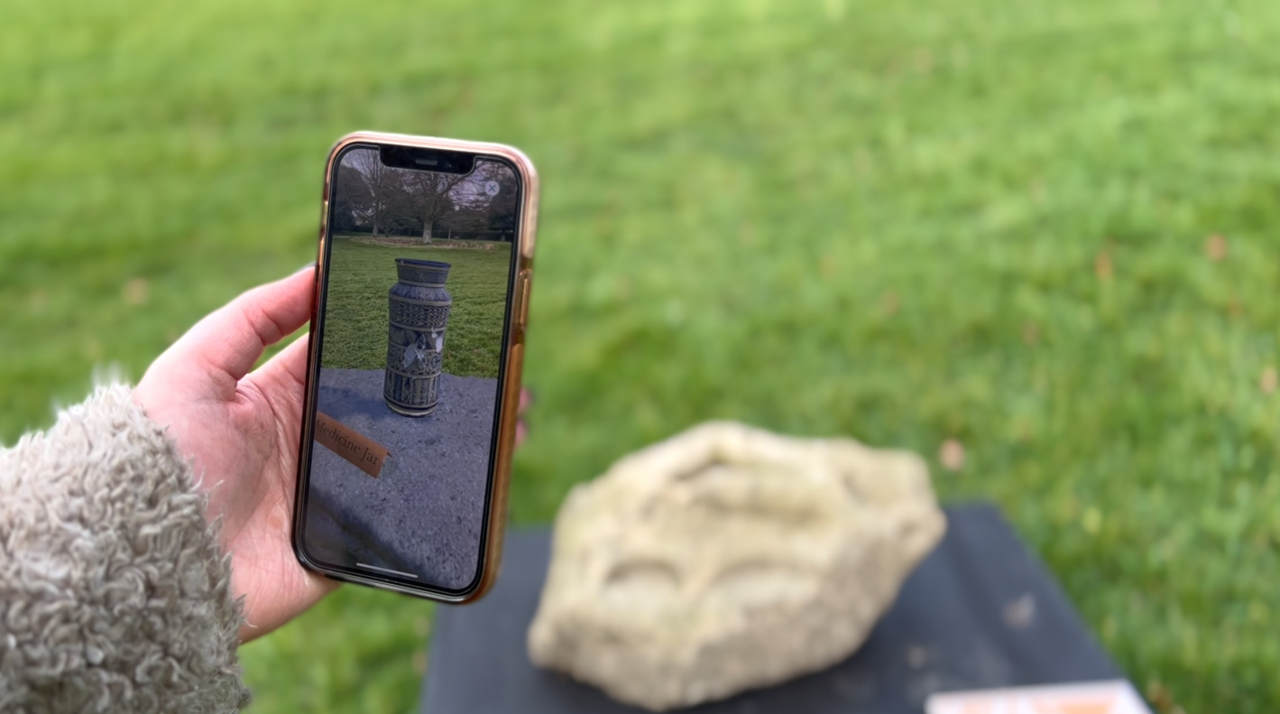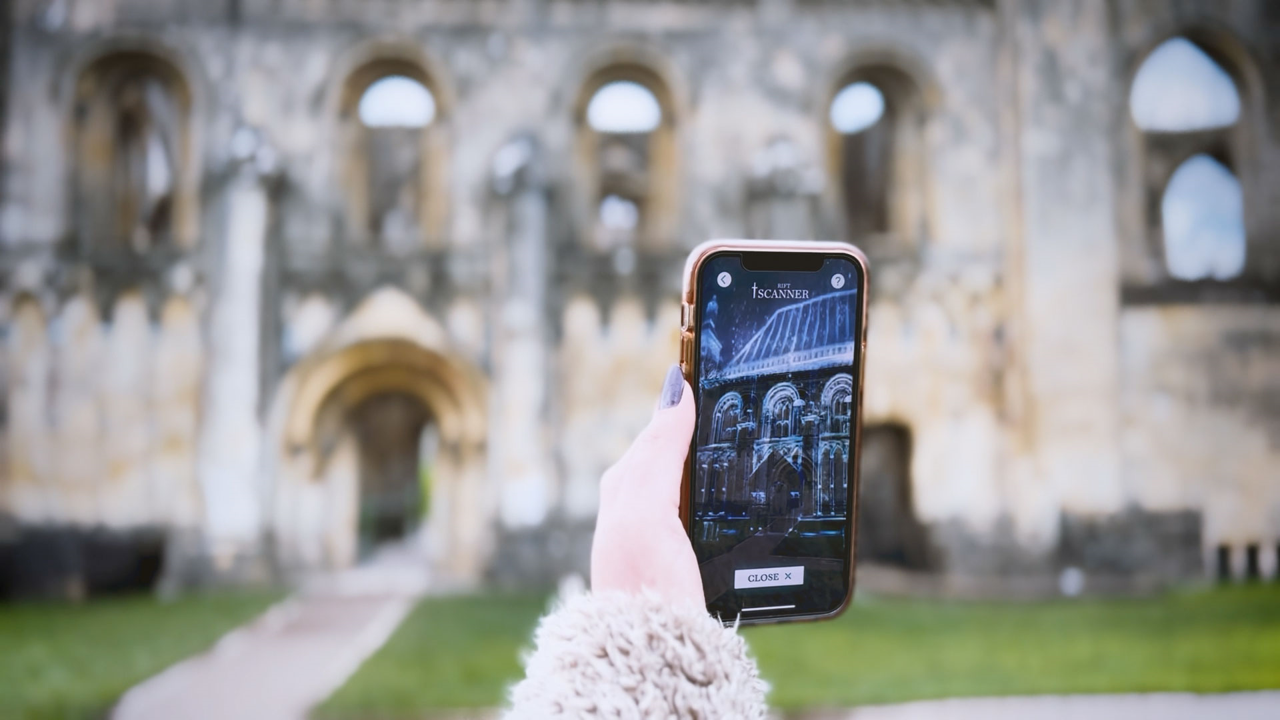Glastonbury Stories App

‘Glastonbury Stories’, a new AR app for visitors to Glastonbury Abbey, combines archaeology with gamification to encourage families to explore the abbey ruins and learn more about its past. The storytelling narrative engages directly with the sacred heritage of Glastonbury Abbey and aims to respect the beliefs of diverse spiritual stakeholders who venerate the site today. It draws on Glastonbury’s rich medieval tradition of pilgrimage and its spiritual quality as a ‘thin place’.
Location-based gameplay was chosen to engage younger children (aged 9 to 14) and reinforce learning through play. A (female) pilgrim-narrator explains that time has become unstable at Glastonbury Abbey, resulting in objects from the past slipping through to the present. Users are invited to help by returning objects to the past, to the medieval people who have lost them. Users navigate to ‘rifts’ where they solve a simple puzzle to cause an artefact to fall through the rift, most of which are only partial fragments, reflecting their actual state as recovered by archaeological excavations.
The user needs to identify which object they have found, from a menu of 12 potential objects in the app’s pilgrim satchel. A clue is given in an excerpt of dialogue, revealing hidden voices and human stories from the past. When the object is successfully identified and returned, the user is rewarded by seeing the object in its original condition. Through the power of AR, it transforms from a fragmentary archaeological artefact into a pristine object. The user can examine the 3D object in detail before storing it in their pilgrim’s satchel. At four key locations, the rift opens up a 360 VR scene of a building as it would have appeared in the later middle ages. This gives a sense of the scale and grandeur of medieval Glastonbury and how the past can be reconstructed from archaeological research.
© Arcade
The archaeological objects featured in the app range from a mundane cooking pot to specialist religious and medical objects associated with the abbot’s kitchen, the Lady Chapel, the monks’ infirmary, the monks’ latrines and herb garden. The short audio clue to identify the object features the voices of monks as well as an almswoman, pilgrims, a cook, gardener and child servant. The dialogues were co-created with the abbey’s living history team and they voiced the characters. The app was refined through two stages of onsite testing with 12 volunteer family groups. One family summarised their overall experience:
‘It was really good because it was like an exciting story, took you all over the abbey. Very engaging, captured the kids’ imaginations, the questions were great, a good level of difficulty. The technology is amazing!’
The app is a collaboration between Professor Roberta Gilchrist (University of Reading), Glastonbury Abbey, Arcade immersive heritage and Thread architects, funded by the Arts and Humanities Research Council, and based on research undertaken on the archaeological archives (Gilchrist and Green 2015).



